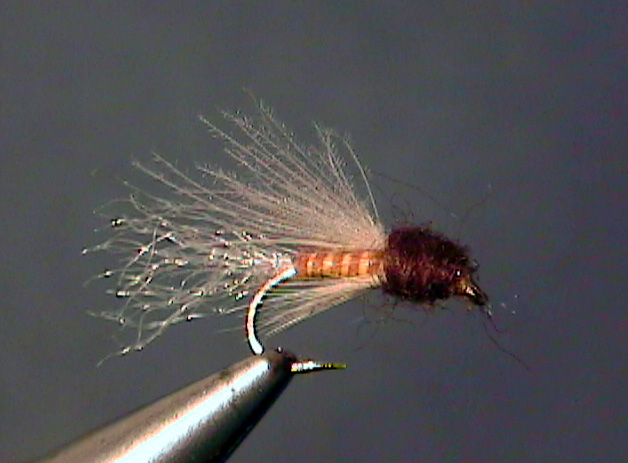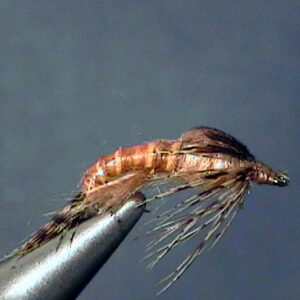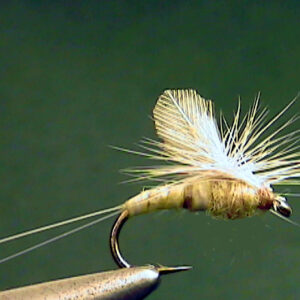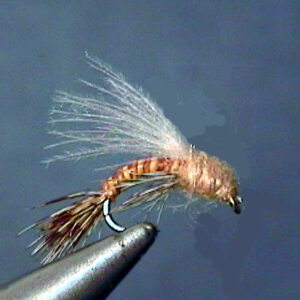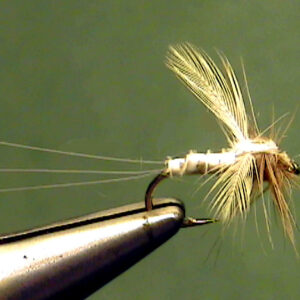Hook Size: 14
The Perfect Fly Eastern Pale Evening Dun Emerger with trailing shuck is an excellent imitation of the actual emerger as it sheds its skin near the surface of the water as it changes into a dun. It looks more like the dun than the nymph. The fly should be fished just under the surface or in the surface skim. The Eastern Pale evening duns usually hatch in the middle to late afternoons depending on the weather. This usually occurs between 1:00 and 4:00 P. M. but in most cases later in the afternoon
When the nymphs are ready to emerge they propel themselves to the surface
where they shed their nymphal shucks. This by far the easiest time for the trout
to eat them. They are helpless at the time.
Emerger Presentation:
Imitations of either the “Perfect Fly” Eastern Pale Evening Dun Emerger and the
Perfect Fly Eastern Pale Evening Dun Emerger with the trailing shuck, should be
presented in the surface skim of the shallow, slower moving water adjacent to the
ripples and runs where the crawler nymphs are found.
The plain emerger is more imitative of the nymph than the dun and the emerger
with the trailing shuck is more imitative of the dun than the nymph. It’s antron
shuck imitates the nymphal shuck before it is separated from the dun. Both take
trout when they are hatching and usually more readily than the dun imitation.
They are not as easy to fish as the dun, however, because they float level with
the surface skim and are much more difficult to see in the water to detect the
trout taking the fly. The trailing shuck version is easier to see than the plain
emerger, so if you’re having trouble seeing your plain emerger fly, switch to the
trailing such version.
The nymph live in moderately flowing water and that can be pocket type water or
slick, smooth flowing water. Alter your presentation to meet the
conditions.Although we use an up and across presentation, a down and across,
on the swing presentation is often the best way to get the fly to trout feeding on
the emerging nymphs in some smooth water situations. It strictly depends on the
water. If the surface is broken and not smooth, use the up and across type of
presentation. If it is smooth water, use a down and across presentation.
We recommend at least a 9 foot long leader with a 5 or 6x tippet.
Copyright 2013 James Marsh
